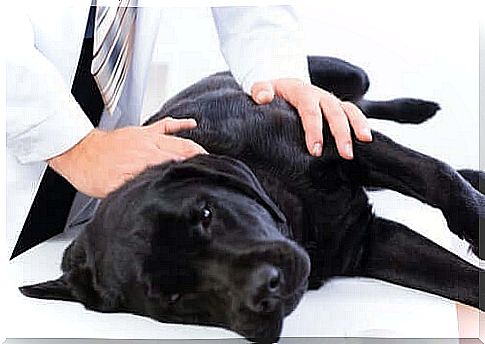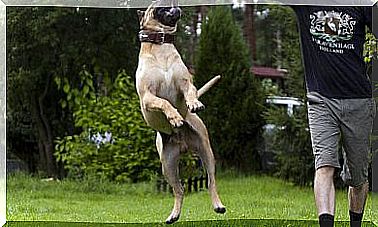How Do You Know If A Dog Is In Pain?

Establishing whether or not a dog is in pain can be simple. However, assessing the extent of this pain is a complex task. It should be borne in mind that, although pain signs in animals are well known, none of these signs – alone or in combination – provide definitive evidence of pain.
In general, if an animal undergoes a procedure that would cause pain to a human being, it is assumed to cause similar pain intensity in the animals.
There are differences if a dog is experiencing acute pain or chronic pain
It’s good to know that with pets, the signs of acute and chronic pain may differ. In cases of severe acute pain, animals may show signs of anxiety, dilated pupils, restlessness or limp, for example, in addition to personality changes, increase or decrease in physical activity, self-mutilation and vocalization.
There are also signs of acute pain: excessive salivation, increased respiratory rate and heart rate. Additionally, changes in biochemical parameters in the blood are manifested: increased concentrations of blood glucose, cortisol, ACTH and catecholamines.
On the other hand, in the case of chronic pain, responses include protective behaviors. These behaviors are adaptive responses to pain, and are observed in the way they move and also in the postures they assume.
Usually, the dog tries to avoid influences that aggravate the pain, thus taking care of the painful region. In addition, it is common to see signs of stress, including loss of weight and appetite, in dogs suffering from chronic pain.

How is pain intensity measured in dogs?
Currently, methods that measure pain intensity in pets are based on behavior assessment.
Several questionnaires were created that give a score for each evaluated parameter. Finally, the result is measured according to a pain scale, which allows the veterinarian to suggest the most appropriate treatment.
Typically, behaviors that reflect pain include factors such as changes in posture, as well as changes in bodily activity, such as avoiding moving, lying down, or changing position, for example. In addition, changes in locomotor activity, vocalization, appetite, urination and defecation habits, or in response to being manipulated are considered.
Currently, there are several pain scales. It is worth noting that there is no scale that can be considered the “reference” in pain measurement. Among the pain scales primarily developed for dogs are Melbourne or Glasgow.
What posture changes are seen when a dog is in pain?
Typically, one observes a rigid body posture, so when a dog is in pain on one side of the body or the other, it’s easy to tell. The first sign is usually the act of limping.
On the other hand, in cases where the pain is central or bilateral, the dog may not favor the use of a particular side. Thus, it is important, in these cases, to observe the level of stiffness. It’s common for the dog to walk all stiff, with its ears back, stagger to turn its head or bend its spine, and lean back or feel tense.

Changes in social behavior also count.
The animal’s social context is also an important factor to consider. In other words, if he lives with other animals, isolation from group members may be an early symptom of pain.
Thus, shy or fearful behavior is common in animals affected by pain. Also, animals instinctively tend to hide their pain in the presence of a predator in an effort to mask their vulnerability.
It has been suggested that, due to the fact that humans can be perceived as predators, an animal may not manifest pain in front of its owner. However, it has also been said that a pet in pain can manifest excessive attachment or a desire for constant attention from the person.
Finally, as your dog’s best friend, you know his behavior better. That is, you are the one who will know if something seems out of place, and you can act to seek treatment for your dog.









